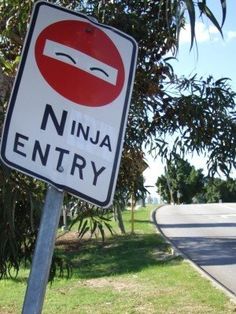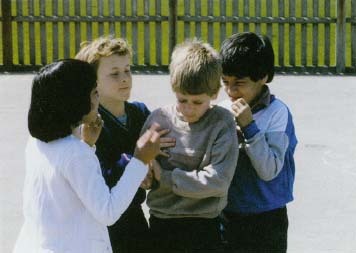
In our world of terrible wars, hospital bombings, drowning children, night club shootings, trucks mowing people down, the news cycle has moved on since Mr Satoshi Uematsu murdered 19 people in a foreign country with 127 million more. It has even moved on since we found out that Australia is being investigated by the UN like some two-thirds world dictatorship for our treatment of prisoners with cognitive disabilities.
Coverage  of these events tried to emphasize how horrifyingly unusual they were. The Japanese event was ‘Japan’s worst mass murder since World War II.’ The PM allowed a royal commission into the Four Corners torture of kids in an NT prison, but no further inquiry to see if the problem was broader.
of these events tried to emphasize how horrifyingly unusual they were. The Japanese event was ‘Japan’s worst mass murder since World War II.’ The PM allowed a royal commission into the Four Corners torture of kids in an NT prison, but no further inquiry to see if the problem was broader.
 But the reality is that these events are not unusual or outrageous. They throw a spotlight on the horrifically mundane. Uematsu proudly turned up at the police station, weapon in hand, and boasted of doing society a favour by helping to make this 10% of his country’s population disappear
But the reality is that these events are not unusual or outrageous. They throw a spotlight on the horrifically mundane. Uematsu proudly turned up at the police station, weapon in hand, and boasted of doing society a favour by helping to make this 10% of his country’s population disappear
Mr Uematsu said that “The disabled should all disappear” and then went about taking out his frustration that they wouldn’t out on them. This was a hate crime. In Western (actually in most) cultures, this is normal behaviour based on thinking that is still acceptable.
See my very first post about how many “commissions” and “inquiries” have already told us that what went on in the Northern Territory juvenile detention centres has been going on for years against disabled people…but only now its against another group is it coming to light.
The truth of what happens:
Hate crime by people who wish people with disabilities would disappear is quite endemic really, at least in Western cultures: Here are a few statistics:
- A
 summary of 21 top studies from Australia, the US, Britain, Canada, South Africa, Taiwan and even Kiwi-land, endorsed by the World Health Organisation found that children with disabilities are 3.7 times more likely to be victims of physical or sexual violence, and adults were also at much greater risk (1.5 times greater, at minimum).
summary of 21 top studies from Australia, the US, Britain, Canada, South Africa, Taiwan and even Kiwi-land, endorsed by the World Health Organisation found that children with disabilities are 3.7 times more likely to be victims of physical or sexual violence, and adults were also at much greater risk (1.5 times greater, at minimum).
- 1.5 is an extremely conservative estimate. US national statistics over m
 any years suggest people with disabilities of any type are at least twice as likely to be the victims of physical crimes, and these are twice as likely to involve serious violence, the kind of violence that makes you want to disappear, even if you can’t. The Emerson and Roulstone UK study also found that people with disabilities generally are 2.6 times more likely to experience hate crime than people without.
any years suggest people with disabilities of any type are at least twice as likely to be the victims of physical crimes, and these are twice as likely to involve serious violence, the kind of violence that makes you want to disappear, even if you can’t. The Emerson and Roulstone UK study also found that people with disabilities generally are 2.6 times more likely to experience hate crime than people without.
- The US statistics have been analysed to apply regardless of what disability you have, but if your disability is psychosocial or cognitive, your risk goes through the roof, with a 2014 UK study finding your risk of hate crime or violent crime is ten or twelve times higher.
What is Disability Hate Crime?
So hands up you caught me… I’ve been conflating (awesome word there) several ideas Lets have a look:
- Hate
 crime actually been described as a bit of a “slippery concept.” The simplest definition is crime motivated by prejudice. It has has also been called “bias crime.” That means a hate crime has to have two things. The crime part is fairly easy. That’s defined by the criminal law. It covers anything from graffiti to murder. The hate part is a bit weirder. In most parts of America there are special crimes. In New York, for example, it is a crime to commit a crime because of hate (Get that? If a person commits a crime because of hate they commit two crimes: the crime, and the crime of committing the crime for the wrong reason…). But in Australian jurisdictions, graffiti-ing ableist insults on someone’s front fence is the same crime as graffiti-ing immature penis pictures on the local letterbox. The “hate” part of the hate crime is to be taken into account in sentencing.
crime actually been described as a bit of a “slippery concept.” The simplest definition is crime motivated by prejudice. It has has also been called “bias crime.” That means a hate crime has to have two things. The crime part is fairly easy. That’s defined by the criminal law. It covers anything from graffiti to murder. The hate part is a bit weirder. In most parts of America there are special crimes. In New York, for example, it is a crime to commit a crime because of hate (Get that? If a person commits a crime because of hate they commit two crimes: the crime, and the crime of committing the crime for the wrong reason…). But in Australian jurisdictions, graffiti-ing ableist insults on someone’s front fence is the same crime as graffiti-ing immature penis pictures on the local letterbox. The “hate” part of the hate crime is to be taken into account in sentencing. - So the first problem we have is discrimination, harassment and bullying behaviours are not necessarily crimes. It may be covered by the Disability Discrimination Act. If it is against a customer, a colleague, employee/contractor or student (by staff not other students) then it may fall into the hazy and mysterious categ
 ory of “disability harassment” (see DDA Part 2 Division 3) but that is not a crime, and notice how limited the situations are.
ory of “disability harassment” (see DDA Part 2 Division 3) but that is not a crime, and notice how limited the situations are.
- It is a minor offense to incite discriminatory behaviour (DDA s 43).Moreover stalking is a crime. There are crimes like serious vilification and racial vilification in many Australian jurisdictions but (surprise suprise) not for people with disabilities!
- The second problem is very few crimes against people with disabilities would probably be hate crimes, no matter how violent. Someone might not like me because I’m a pain in the backside. If they beat me up, that’s a horrible crime..and if I had a psychosocial disability it might mean I was more likely to fail to read the signs of danger, but it would still not be a hate crime.
 However, if what I just said sounded a bit off, it should. The fact is, that there is a very fine line between taking advantage of a group’s vulnerability and hating that group. What if John steals a disabled person’s handbag because he thinks they are weaker? And what about if Jane rubs someone up the wrong way because her psychosocial disability makes her behave in weird annoying ways…does it count as a hate crime if they lash out?
However, if what I just said sounded a bit off, it should. The fact is, that there is a very fine line between taking advantage of a group’s vulnerability and hating that group. What if John steals a disabled person’s handbag because he thinks they are weaker? And what about if Jane rubs someone up the wrong way because her psychosocial disability makes her behave in weird annoying ways…does it count as a hate crime if they lash out?- There are two ways the law deals with the question of what it means to hate a group of people/type of person. In Australia, if you attack a person with a disability, it is probably not considered a hate crime unless you hate people with disabilities because of their disabilities, and take it out on that person. In some countries, targeting a person because of their membership in a group, whether or not you hate the group, but just because you think the group are soft targets, or any other reason (eg because you think Chinese people are wealthy), is a hate crime. This is called the “group selection test.” In New South Wales, however, targeting people on the basis of a trait someone believes that a group has (eg disabled people because they supposedly can’t fight back), is not a hate crime. In fact its not even considered evidence of prejudice against that group ( I swear, that is what the judge said! Yeah right! Makes no sense. But it does fit with Australian legal trends in discrimination). This is a strict interpretation of the “motive test”. For a discussion. See here.
The underlying problems:
So why is disability hate crime so common and yet not well understood or policed?
 The first problem is that our society really doesn’t care. We all wish the problem would just disappear! In so doing our society is helping those who really want people with disabilities to disappear.
The first problem is that our society really doesn’t care. We all wish the problem would just disappear! In so doing our society is helping those who really want people with disabilities to disappear.
-
- As a society, we often make the evil of the crimes disappear when we talk about them. As Dr Sherry points out, we tend to frame violence against people with disabilities using different words like “abuse” and “neglect” rather than “assault”, “robbery” and “rape”.
 Sometimes we make the person with a disability disappear altogether! Recently we have heard reports of autistic children locked in cages, and women with cognitive disabilities being tied to the roof. Yet society often blames the disability. One headline about the disabled woman being tied to the roof went like this “Pressure Causing Disability Carers to Self-Harm as Federal Funding Evaporates.“The woman with the disability and the Abu Graib style actions against her have totally disappeared from the headline! To see why this is a problem, imagine a headline like this “Stress of Child Care Causing Single Dads to Turn to Alcohol” when the news was that a man had tied his non-disabled children to the roof. Or how about “White Australians facing Depression Due to Identity Crisis” when someone had tried to rip a hijab off a Muslim. Missing the point much?
Sometimes we make the person with a disability disappear altogether! Recently we have heard reports of autistic children locked in cages, and women with cognitive disabilities being tied to the roof. Yet society often blames the disability. One headline about the disabled woman being tied to the roof went like this “Pressure Causing Disability Carers to Self-Harm as Federal Funding Evaporates.“The woman with the disability and the Abu Graib style actions against her have totally disappeared from the headline! To see why this is a problem, imagine a headline like this “Stress of Child Care Causing Single Dads to Turn to Alcohol” when the news was that a man had tied his non-disabled children to the roof. Or how about “White Australians facing Depression Due to Identity Crisis” when someone had tried to rip a hijab off a Muslim. Missing the point much? In Australia, it is perfectly legal, and openly acceptable, to refuse to prosecute a crime because the victim has a disability and this would make it too hard to do so. See, eg, the prosecutorial guidelines for various states. So much for open justice, people with disabilities should definitely disappear from the court-rooms. If that doesn’t say “We
In Australia, it is perfectly legal, and openly acceptable, to refuse to prosecute a crime because the victim has a disability and this would make it too hard to do so. See, eg, the prosecutorial guidelines for various states. So much for open justice, people with disabilities should definitely disappear from the court-rooms. If that doesn’t say “We
don’t care” then I don’t know what does.
- There is an underlying scary attitude that leaves a nagging feeling in the average person that perhaps disappearance is really the best option.Its not just the general prejudice that exists out there, as described in this excellent article. It is far more blatant, and sinister
- In Australia, the relevant government officials must consider deporting a person, and usually do deport a person, along wit
 h their whole family, because that person has a disability. This happens very regularly. That is literally the same attitude as Mr Uematsu. We are saying “disabled people should disappear.” In many cases, the person will go home to far greater prejudice and far less care, but hey, why do we care? They are not people, they are just a burden that we need to erase.
h their whole family, because that person has a disability. This happens very regularly. That is literally the same attitude as Mr Uematsu. We are saying “disabled people should disappear.” In many cases, the person will go home to far greater prejudice and far less care, but hey, why do we care? They are not people, they are just a burden that we need to erase. - The “disability snuff film” Me before You made 9 million dollars in the first month in Australia, 196 million dollars at the box office worldwide. On Rotten Tomatoes it has a 75% audience like rating. Now I’m not venturing into the question of euth
 anasia for the terminally ill. But here is a man, a new wheelchair user, who lives in a castle and has a beautiful girl in love with him. He has lost all that comes
anasia for the terminally ill. But here is a man, a new wheelchair user, who lives in a castle and has a beautiful girl in love with him. He has lost all that comes
with being a high rolling playboy through the fault of our society. (I honestly can’t see how being in a wheelchair inherently robs one of the capacity to speculate on the stock market). And we think its a perfectly viable option for him to kill himself and leave all his money behind to his new girl. How convenient..the burdensome human being disappears but she gets the windfall. Clearly, we think his disappearance is entertaining.
- In Australia, the relevant government officials must consider deporting a person, and usually do deport a person, along wit
Resources for Improvement:
With attitudes like the above, it is difficult to see how the problem can be fixed in the short term. However, there is hope:
I n 2015 there was a shocking 41% rise in disability hate crime prosecutions in the UK. Far from a cause for alarm. This is wonderful news. It was attributed to an awareness campaign among people with disabilities and police. The Disability Hate Crime Network in the UK has educational materials that could be of use to use to us in discussing the issue…at least until we get some local stuff. .
n 2015 there was a shocking 41% rise in disability hate crime prosecutions in the UK. Far from a cause for alarm. This is wonderful news. It was attributed to an awareness campaign among people with disabilities and police. The Disability Hate Crime Network in the UK has educational materials that could be of use to use to us in discussing the issue…at least until we get some local stuff. .
The  Muslim community have an “Islamophobia register” to keep a record of hatred against their community. In our case we have the “disability clothesline” where people can post about incidents of violence and abuse on Facebook. If I had enough people following this blog I would set up a register of more general hateful behaviour too. But lets support this clothesline. Sunlight is the best disinfectant.There is also the disability access wall of shame, where less serious bad behaviour can be held up to the light.
Muslim community have an “Islamophobia register” to keep a record of hatred against their community. In our case we have the “disability clothesline” where people can post about incidents of violence and abuse on Facebook. If I had enough people following this blog I would set up a register of more general hateful behaviour too. But lets support this clothesline. Sunlight is the best disinfectant.There is also the disability access wall of shame, where less serious bad behaviour can be held up to the light.
 For people cognitive disabilities there is an easy read resource for Australian women on physical and sexual violence here. Also, although it comes from the UK this easy-read booklet on disability hate crime generally is also a good resource. IDRS also offer assistance to victims with cognitive disabilities who are reporting to police here.
For people cognitive disabilities there is an easy read resource for Australian women on physical and sexual violence here. Also, although it comes from the UK this easy-read booklet on disability hate crime generally is also a good resource. IDRS also offer assistance to victims with cognitive disabilities who are reporting to police here.
There is a lot out there on self-defense for people with physical impairments, and for the serious, adaptive martial arts is growing. Judo has been a paralympic sport since 1988, and Tae Kwon Do may come in 2020.I love how it points out that wheelchair users can punch an attacker in the groin more easily in this intro to self-defense for wheelchair users.
For the theoretically inclined like myself, there is the Australian Hate Crime Network with a library of resources here , but it is appallingly poor on the disability front. There is actually quite the a gaping hole there. You are better off hunting down anything by Dr Mark Sherry. There is also the OSCE’s resources. They are much better introductions to the subject, and discuss the issues of whether or not to protect people with disabilities or just race and so on in light of international comparative law, but without completely excluding any lay people.
 Now, lastly, .I am not a punitive person at heart, and I’m not against free speech either. However, I do think that the idea of attacking a person because their vulnerabilities mean they should disappear is of a fundamentally different character to stabbing your cheating partner. We are very comfortable with the idea of attacking the vulnerable being worse than attacking the powerful. We are also very familiar with the idea of attacking someone because they are of a group we wish weren’t there. Disability hate crime brings both these things together! As a result I really do think that disability hate crime should be a special offense under the group selection model, and it should be vigorously prosecuted. Only then will we bring the erasers of people with disabilities out of the shadows.
Now, lastly, .I am not a punitive person at heart, and I’m not against free speech either. However, I do think that the idea of attacking a person because their vulnerabilities mean they should disappear is of a fundamentally different character to stabbing your cheating partner. We are very comfortable with the idea of attacking the vulnerable being worse than attacking the powerful. We are also very familiar with the idea of attacking someone because they are of a group we wish weren’t there. Disability hate crime brings both these things together! As a result I really do think that disability hate crime should be a special offense under the group selection model, and it should be vigorously prosecuted. Only then will we bring the erasers of people with disabilities out of the shadows.
